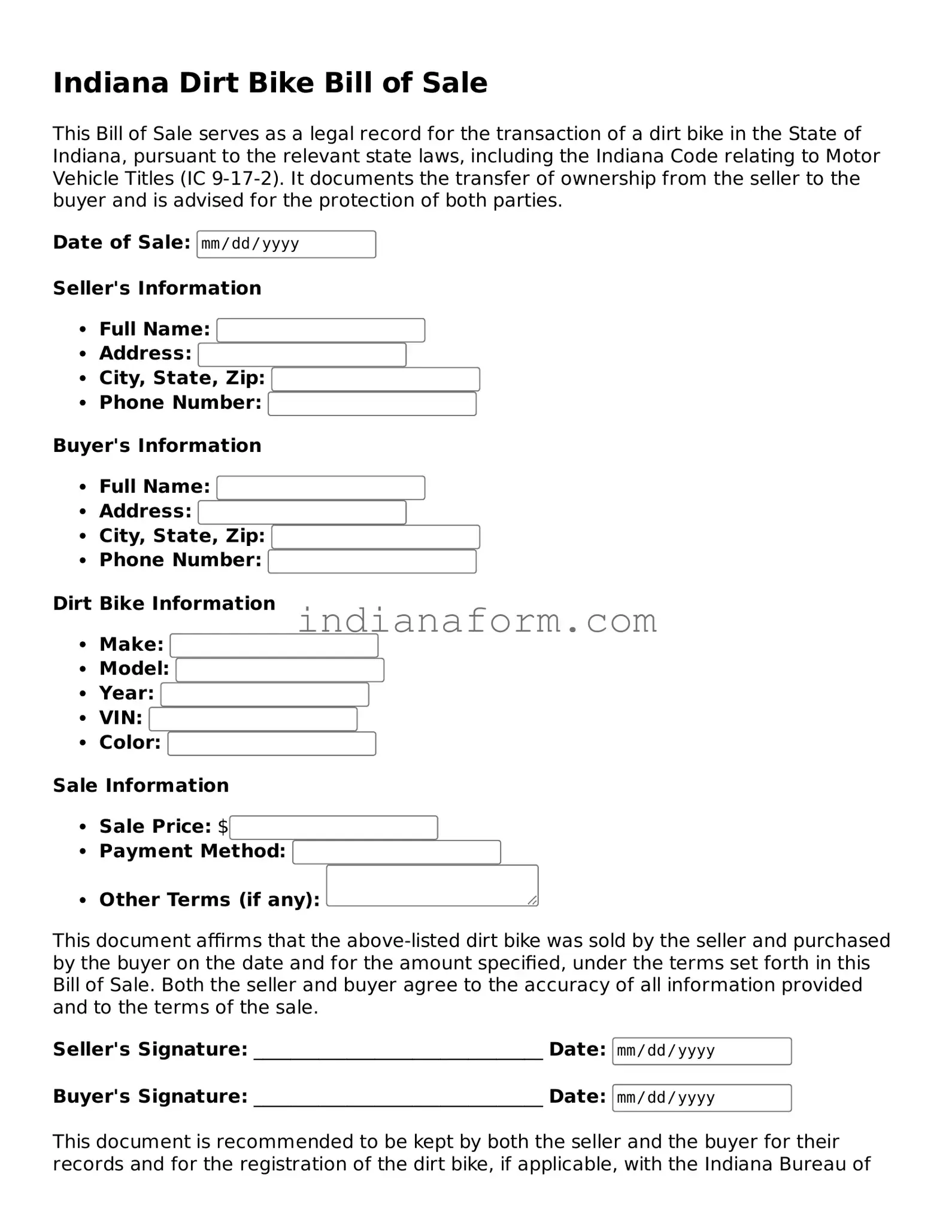What is an Indiana Dirt Bike Bill of Sale form?
This form is a legal document used in Indiana to record the transaction of a dirt bike from a seller to a buyer. It includes essential details such as the dirt bike's description, the sale amount, and both parties' information, serving as proof of transfer and ownership.
Why do I need an Indiana Dirt Bike Bill of Sale?
It's crucial for several reasons: it officially documents the sale and transfer of ownership, can be useful for registration and titling purposes with the Indiana Bureau of Motor Vehicles (BMV), and serves as a valuable record for tax and legal purposes.
What information should be included in the Indiana Dirt Bike Bill of Sale?
The form should include the make, model, and year of the dirt bike, the vehicle identification number (VIN), the sale price, and the date of sale. Additionally, the names, addresses, and signatures of both buyer and seller should be clearly provided.
Is notarization required for the Dirt Bike Bill of Sale in Indiana?
While notarization is not strictly required by Indiana law for a dirt bike bill of sale, having the document notarized can add an extra layer of legality and protection for both parties involved in the transaction.
Can I use an Indiana Dirt Bike Bill of Sale for a dirt bike bought in another state?
Yes, an Indiana Dirt Bike Bill of Sale can be used for dirt bikes bought in another state, as long as the document meets the requirements of the Indiana BMV. It is important to ensure that the bill of sale includes all necessary information as required by Indiana law.
Does the Indiana Dirt Bike Bill of Sale have to be filed with any government agency?
No, the bill of sale does not need to be filed with any government agency. However, it is a crucial document for the registration and titling process of the dirt bike with the Indiana BMV, where it might be required to prove ownership.
What if the dirt bike does not have a title?
In cases where the dirt bike does not have a title, the bill of sale becomes even more critical as it may serve as the primary document proving ownership and the legitimacy of the sale. It is advisable to check with the Indiana BMV for specific requirements related to untitled vehicles.
How many copies of the Bill of Sale should I make?
It is a good practice to produce at least two copies of the bill of sale—one for the buyer and one for the seller. Keeping a copy for personal records can help in future legal or tax-related situations.
How can I ensure the Bill of Sale is legally binding?
To ensure the bill of sale is legally binding, make sure that all information provided is accurate and that the document is signed by both the buyer and the seller. For added security, both parties may choose to have the signatures notarized.
Can a Bill of Sale be used as a warranty for the condition of the dirt bike?
No, the Bill of Sale itself does not act as a warranty for the condition of the dirt bike unless explicitly stated otherwise within the document. It merely records the transaction and transfer of ownership. Any warranty or guarantee regarding the condition of the dirt bike should be outlined in a separate agreement.
